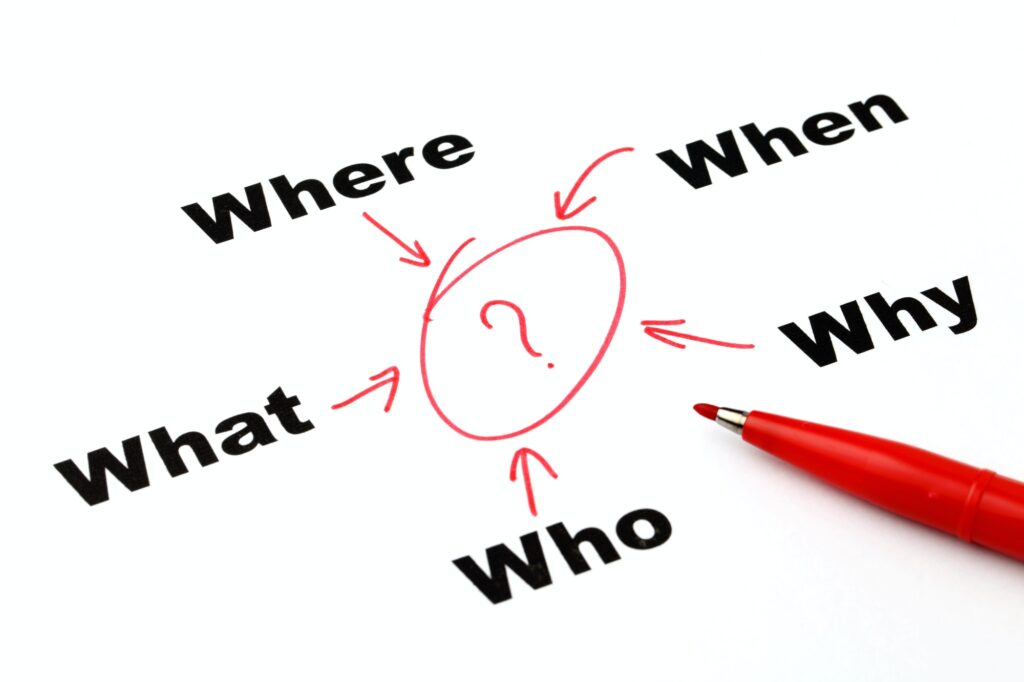Why should you make a pitch deck?
We start right with the conclusion: You make a pitch deck to arouse the recipient’s interest in your case.
Getting in touch with investors, the right accelerator program or others can often be very cumbersome. As an entrepreneur – both experienced and inexperienced – it may be that you do not get into the necessary circles, have the network to open doors or you just do not know who to call. Here you can instead send a pitch deck to create a connection between the company and the potential investor.
A pitch deck should create a quick overview, where you get a sense of the case (and the entrepreneur behind the pitch deck). A good pitch deck with the right eye-catcher and length is the perfect way to get into what is crucial: a meeting between you and the stakeholder.

Basic foundation for a pitch deck:
A pitch deck is not a Business plan
There are many who believe that the deck is the same as a business plan – It’s a big misconception. A pitch deck is what catches the attention in a snapshot – It should (according to our recommendation) be between 10-15 pages.
Send it in PDF! – Not in PowerPoint, Keynote or anything else
Do it properly the first time – do not send your deck in a format that is editable to the recipient. Make sure it is set up correctly, that the page numbers match and that you do not have too many pages.
Appetizer – Be specific and precise
A pitch deck should not have unnecessary filling – It is not a complete market report, it is not a review of your budgets, etc. It should instead be an accurate and concrete review of data and conclusions in each area. You can see which points you need to include just below (just wait .. It’s really worth it)
Your pitch deck should broadcast your business
You do not make a pitch deck in an hour or two, it takes a long time – At the time we raised capital for one of our own companies, DIGURA, we continuously spent time, around a month making it complete. So it’s a long time to make 12 slides but content, design, font size, etc. should signal your business and what you stand for. It is therefore very important to think a lot about what you want out of the 12 slides – what signal would you like to send to the recipient about both you and your case?
What should a pitch deck contain?
Now to the important thing:
What exactly should be in a pitch deck? And what should not be? One is quickly decided by the number of slides. As previously mentioned, 10 -15 slides are the target for you – At least, not more.
The essential thing is that you get told; What is the problem, why is it exactly your company that solves it and how is the team. That’s the most important thing, and it’s clear on the pitch deck.
We set up our own pitch deck in the following order:
- Front page
- The problem
- The solution
- Business model
- Competitive advantages
- The Market
- Proof of concept
- Strategy for growth
- Roadmap
- The team
- Economy
- The Ask (aka.valuation, ownership interests and risk)
- Closing
Slides, which we often also see (or which replace some of the above points), are:
A) Competitor overview – How to position yourself in relation to the others
B) Testimonials from customers, partners, etc.
C) Persona on customer types.
What should each slide contain?
Frontpage:
Have the name of your idea or company as well as contact information on yourself.
Have you made a cool logo? Throw it in so a potential investor can imagine that whole brand throughout the pitch deck.
The problem:
Describe the problem, who the problem is for, and why the problem is actually a problem. The point here is to initiate thoughts in the reader and make him or her realize that there is an issue that has not yet been resolved (or at least not resolved as well as you can).
Solution:
What is the solution, how does the solution work, and what is the benefit of solving the problem (what does the recipient get out of solving the problem; money, time, etc.?). Emphasize how your solution solves the problem that you have described above. Make sure that the reader is left with a feeling of “stop it, it is the solution to the above problem”.
Business model:
How does the company make money; 1) Is it a subscription solution? (and are there different packages?) 2) Is it a one-time benefit? 3) How is it related financially? (how much time you spend on a customer, etc.). A case is nothing if no money is made, so be sure to illustrate the business in the case.
Competitive advantages:
Are there competitors? And what exactly does your company do specifically in relation to these? Explain and clearly demonstrate what sets you apart from the rest of the market. It can be a new payment model, platform-based instead of physical meetings or something third. It is one of the most crucial slides there is.
The market:
Is your market Denmark? Is it Europe? Or maybe it’s the whole world? Describe where your target audience is and who the target audience for your solution is. And always make sure to let the data illustrate how big the target audience is, instead of just guessing. If necessary, work with concepts such as TAM (total market for your industry), SAM (the part of TAM that you can service with your product) and SOM (what market shares you can gain from SAM). If not sure, Google the terms if you want to take a closer look at them.
Proof of Concept:
What we call “traction” = What milestones have you achieved so far with which KPIs. In Scale Incubator, we often use the following groupings to illustrate our proof of concept;
● Earnings (what has been earned so far, what is earned per month and LTV / CAC ratio, etc.)
● Customer base (how many customers have there been, where you are going, etc.)
● Growth (how much does revenue increase month to month, new customers month to month, etc.)
● Process (how long does a customer take – the point depends a lot on the case)
● Satisfaction (satisfaction score from current and previous customers, recommendation level, etc.)
Strategy for growth:
Most people call this slide “Go to Market”. It describes how to take over all world domination (which, of course, is your plan ). What elements should be used for marketing and sales? Which markets are “up for grab”? What focus points need to be focused on to scale the case? etc.
Roadmap:

This slide usually tends to be lined up in point form and in intervals of quarters of future plans. Another element that we in Scale Incubator usually include is a historical overview. Here you can describe when which products should be launched, what the focus should be on during the period, as well as an overview of which markets should be taken at which times.
The team:
Most investments depend on the team. It is therefore a slide of great importance – not that the reader’s judgment depends solely on this, but it may mean that all interest disappears. Be sure to describe why you are in the right team, what your relevant experience and background is. Prove that you are the right people to take on the specific task.
Economy:
You do not raise resources and capital for no reason, so be sure to describe 1) What the investment should actually go to, how the money should actually be used, and how it affects the budgets and the company’s future.
The Big Ask – (aka. Valuation and ownership interests):
What do you want from the reader – Is it labour resources, is it loans or pure capital for equity? Make it clear what you want, as well as what valuation it is for.
Tip: Hit it right and be honest about it instead of writing an unrealistically high number – It does not benefit you anyway, and you may lose the reader’s interest right there.
Closing:
Thank the reader for taking the time to read the wear and tear and make sure your contact information (full name, phone number and email) is clear.
The right questions for a pitch deck.

Who can you send it to?
There is a reason you found this post. This is often because you have found a recipient – But often a pitch deck is either the first touchpoint or the second touchpoint of an investor, bank or fund if you provide capital and resources. Most investors of a professional nature often have a form or email where you can send the pitch deck to (however, we always recommend opening a door to the investor, so there is already some dialogue going on with the investor instead of sending pitch deck unsolicited).
What language should the pitch deck be in?
It depends on who you yourself are, what your business is and who the recipient is. All companies where we have raised capital in Scale Incubator have taken place with an English-language pitch deck, as our investors in companies are resident abroad, or are so large at home that the fund’s main language is English.
An important note is when you talk to funds, investors, etc: Even if your contact person speaks Danish, it may be that their analyst or division team is in English. If it is English from the start, then one avoids having to translate it afterwards, misunderstandings or other complications.
Is a pitch deck stationary?
No,A pitch deck could (and should) change over time. This can be due to new data, changes in the business, or that you are repeatedly criticized for not including a point (if you are always asked questions about something in particular, then it is a good hint that you should include it in your pitch deck).
But a pitch deck can also change in relation to the recipient – If it is a bank, then it must be backed up by data, if it is for us, then there must be ambitions and confidence in the deck. There are also accelerator programs that have a requirement for which pages to appear, etc. It is therefore always a good idea to examine the recipient’s website or other material, so you are sure if there are specific requirements for a specific recipient. It is an unfortunate start if you are missing something they specifically demand or are sending something they specifically do not want. It seems ill-considered, and you are thus in a bad position right from the start.
Should I get the reader to sign an NDA?
You can try, but it probably hardly happens. We, at Scale Incubator, would never dream of signing one – and 98% of everyone else can either. It’s not your pitch deck that makes it turn into big business, it’s execution and the team that do it. Furthermore, it can be discussed how much protection an NDA actually provides, but we will not go into that in-depth here.
Inspiration for your pitch deck
See how Facebook did it(note it’s a little older): click here.
See how Airbnb did it: click here .
See how Buffer did it: click here.
See how Uber did (note it was called Uber Car back then): click here.
See how Snapchat did it: click here.
Template for pitch deck
Template from TheHub; get it here .
Template from Keystones; get it here .
Guide from DanBan; get it here .
Template by Toke Kruse; get it here .
Do you already have a pitch deck?
If you already have a pitch deck and you think you are ready to ramp up your entrepreneurial business, then you are more than welcome to submit your pitch deck via our portal.
If you want feedback on your pitch deck, feel free to upload it on our page as well, you will receive feedback from the Scale Incubator tram.
